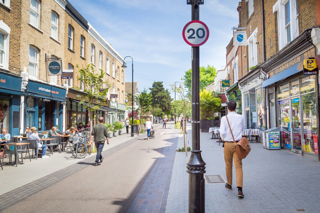Transport for London (TfL) has today set out plans for a 'Games-style' approach to keeping London’s traffic flowing as a far-reaching programme to improve London’s roads gets underway.
The continuing success of London means that the number of people living in the city is growing at a faster rate than anywhere else in Europe, from 8.6 million today to an expected 10 million in 2030. Alongside huge investment to improve public transport, TfL is investing £4 billion to modernise the road network to adapt it for the 21st century.
The Road Modernisation Plan includes hundreds of transformational projects to improve life in the Capital, through the creation of new cycle routes, upgraded traffic signals, crossings, pavements and highways, and build re-designed, safer junctions at Stockwell, Oval, Archway, Vauxhall Bridge and other key locations. This week Londoners backed plans for major junction improvements at Stockwell and Archway and work has begun at Oval junction, including the creation of new segregated cycle lanes.
Some of the key parts of the plan include:
- 17 major road schemes to create better public spaces and support development and economic growth;
- 33 junction improvement programmes to make them safer for everyone;
- Four new cycle superhighways and improvements to four existing routes;
- A programme to modernise traffic signals and install Pedestrian Countdown to improve road safety;
- Maintenance and modernisation of essential roads, bridges and tunnels including innovative work to repair the Hammersmith flyover;
- Replacing more than 1,000 streets lights each year with energy efficient LEDs and planting more than 500 new trees.
This modernisation represents the biggest investment in London's roads in a generation, and means that the number of projects underway on the city’s streets is increasing significantly.
TfL’s traffic engineers have developed sophisticated traffic management plans to limit the impacts on road users. Sensors are being buried in carriageways across London to detect real-time traffic conditions at junctions and optimise traffic light timings to reduce delays. More than half of all junctions in London now use this ‘SCOOT’ technology, which has proven to reduce delays by up to 12 per cent at each junction where it has been installed, and three quarters will be fitted with it by 2018.
In central London around 90 per cent have now been fitted with the technology and by 2018 virtually all junctions will have it. TfL’s London Streets Traffic Control Centre is also continuously managing traffic across London 24 hours a day, utilising state of the art technology to ensure that key routes and junctions are controlled in real-time.
Leon Daniels, Transport for London’s managing director of surface transport, said: “Our £4bn Road Modernisation Plan is creating a greener, safer and more attractive London, including a radical improvement in conditions for cyclists. This programme is changing London for the better and we must work with Londoners, businesses, boroughs and others to help people adapt.
“However, just like with the recent upgrades on the Underground, Londoners will find that there are more modernisation projects underway that affect their journeys. Just as we did during the London 2012 Games, we’re utilising the latest technology to manage the road network and limit disruption. We’re also working with businesses to re-time deliveries outside of peak times and are providing a huge range of detailed travel information, advice and tools so that, wherever possible, road users can plan ahead and avoid hotspots.”




















John manston - 27/03/2015 09:31
TFL are not in the real world. They fail to consult road users,business and professional drivers. Instead they pay huge sums of money on fairytale CAD models Which are about as much use as a chocolate fire guard. London is not moving,congestion charge just a revenue vehicle. Mayor Boris 6th member of the famous five. By the time the projected improvements are up and running London will be at a standstill.